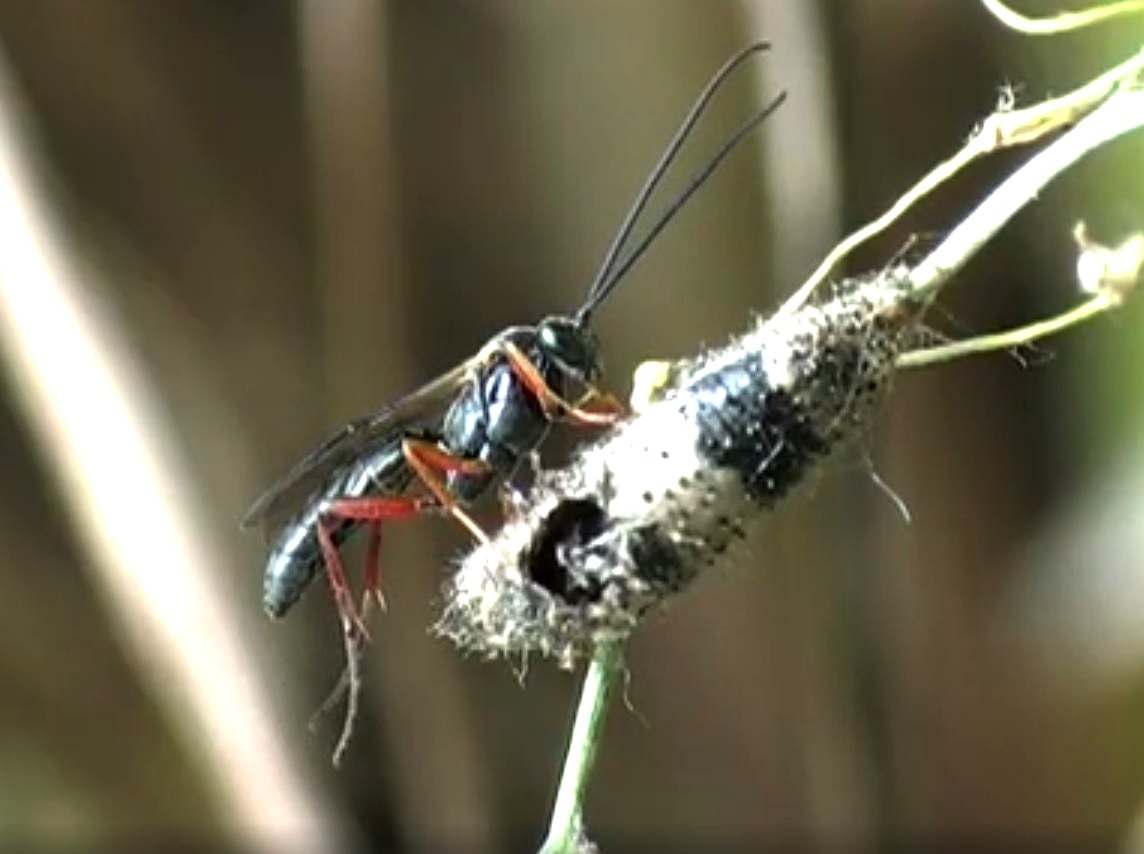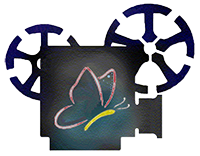

The Western Dappled White (Euchloe crameri Butler, 1869)
The Western Dappled White is widespread and abundant in the South of France. It flies in two generations, from the end of February until May, and from mid-May until July. The 2nd generation is often more abundant than the first one. It hibernates in the stage of a chrysalis. The two sexes look alike. The eggs are laid singly on inflorences of different Brassicacea, locally on Biscutella laevigata, Sinapis arvensis or Istatis tinctoria.
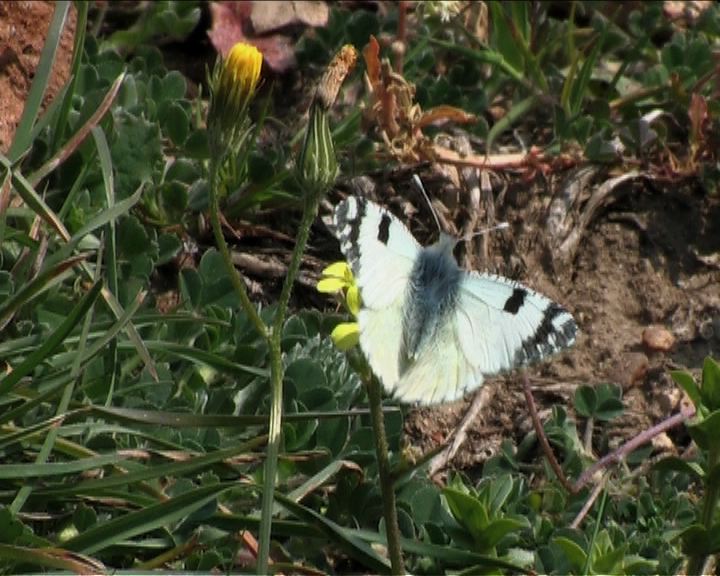
Parasitoids
The parasitoid wasp Cotesia euchloevora Shaw, 2020, parasitizes the caterpillars of butterflies belonging to the tribe Anthocharini of the family Pieridae and has a restricted host range. Althouhg it is a regular parasitoid of Western Dappled White, it also uses other hosts at other times of year, and it occurs in areas where Western Dappled White does not. The female wasp injects a single egg in its victim. The parasitoid larva develops inside its host where it lives at first on the heamolymph, without preventing the host’s growth. By the time the caterpillar reaches instar 3, and is about 12 mm long, the parasitoid has started to consume some of the more vital tissues of the caterpillar. The larva partly erupts above the 2nd or 3rd abdominal proleg, and then it immediately spins a safety net. This is made while the posterior of the parasitoid larva is still within the host. Once the dead host remains are removed, often falling to the ground, the parasitoid larva spins its cocoon. After about 10 days the adult wasp emerges. C. euchloevora is also reared from caterpillars of Aplocea efformata (Geometridae, Larentiinae) feeding on Hypericum (Hypericaceae). A. efformata overwinters as a caterpillar and can be used to overwinter by C. euchloevora.
Cotesia euchloevora described by Dr Mark R. Shaw
Although E. crameri and A. efformata appear not to co-occur locally in at least some of the parasitoid's arid Mediterranean sites, it is very likely that another species belonging to the same subfamily Larentiinae could be used as a host for wintering.
The parasitoid wasp Microplitis retentus (Papp, 1984) parasitizes the young caterpillars of butterflies belonging to the tribe Anthocharini of the family Pieridae. This wasp of 5 mm parasitized young caterpillars of the Western Dappled White. Using its ovipositor, it inject a single egg in its victim. The parasitoid larva develops inside its host (endoparasitoid) where it lives off the haemolymph, without preventing the host's growth. When the caterpillar becomes about 15 mm it climbs high up on the food-plant, and after some time the larva erupts between the 2nd and 3rd abdominal prolegs, and then it immediately spins a cocoon next to the caterpillar, which remains alive for a few days.
Microplitis retentus identified by Dr Mark R. Shaw
In the rearing shown here, the wasp emerged from its cocoon quite rapidly, and there is then a further generation, overwintering in the cocoon. However, it may be more usual for there to be only one generation, with harder and darker cocoons that withstand not only the rest of the summer but also the winter.
The rather specialised Hyposoter ebeninus (Gravenhorst, 1829) parasitizes young caterpillars of butterflies belonging to the tribe Anthocharini and Pierini of the family Pieridae. This wasp of about 8 mm, parasitizes young caterpillars of the Western Dappled White. Using its ovipositor, it injects a single egg in its victim. The parasitoid larva develops inside its host (endoparasitoid) where it lives at first off the haemolymph, without preventing the host's growth. When the instar 3 caterpillar becomes about 11 mm, the parasitoid larva consumes the whole of the body content of the host and spins a cocoon inside the body of the caterpillar in which the metamorphosis takes place. The structure looks like a bird dropping, and after about 10 days, an adult wasp gnaws an exit hole, to free itself.
Hyposoter ebeninus identified by Dr Mark R. Shaw
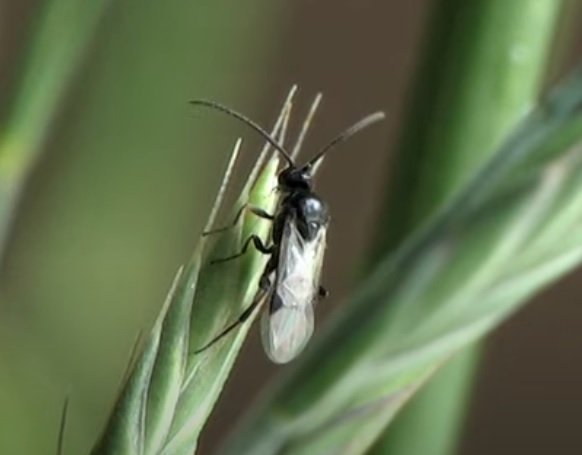
Braconidae : Microplitis retentus parasitizes Euchloe crameri
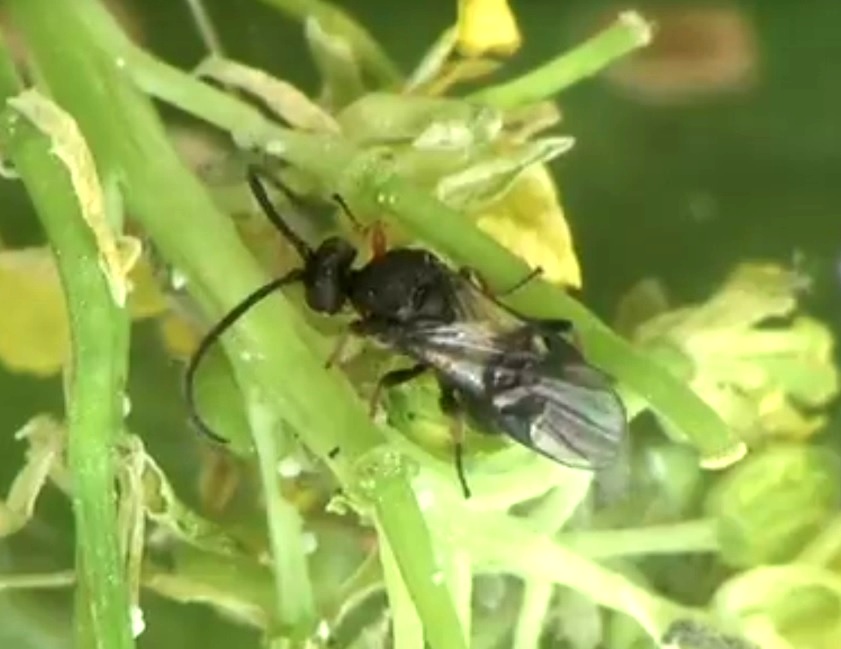
Ichneumonidae : Hyposoter ebeninus parasitizes Euchloe crameri
